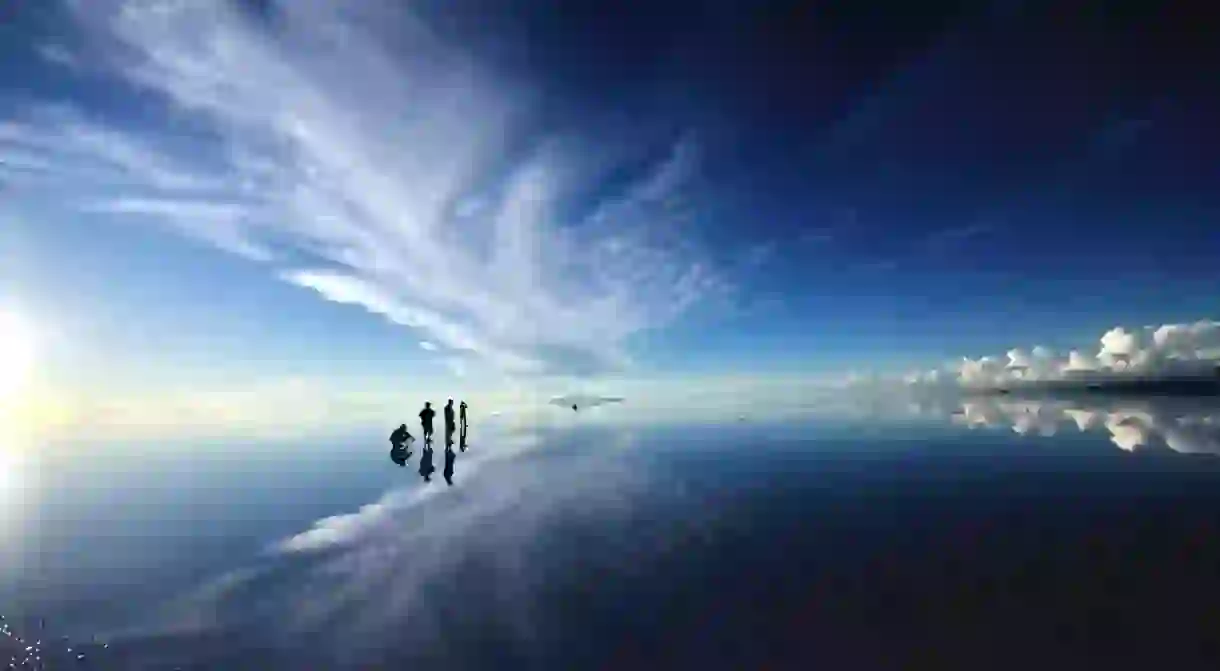Incredible Natural Phenomena Around the World and Where to Find Them

From ‘everlasting lightning’ in Venezuela to Bolivia’s ‘sky mirror’ these are the incredible natural phenomena that should be on everyone’s bucket list.
Frozen bubble lake, Alberta, Canada
Created in 1972, this natural wonder has only been around for a few decades. Abraham Lake is one of Canada’s largest, and during the summer months it shines an effervescent blue because of glacial flour in its waterways. During winter, methane released by decaying plants on the lake bed freezes, creating enormous icy bubbles near the surface.

Bioluminescent waves, Thailand
Often described as ‘stars of the shore’, bioluminescent algae called phytoplankton are the little lifeforms responsible for creating one of nature’s greatest wonders. Exactly how they work is still not completely understood, but that doesn’t stop people around the world from being captivated by this mesmeric display. There are many places around the world you can experience this phenomenon including the Maldives, Australia, USA, Indonesia and Thailand.

Everlasting lightning, Catatumbo River, Venezuela
Lake Maracaibo in South America is so electrically active that for 260 days a year huge storm clouds gather near its entrance, raining down hundreds of lightning bolts per minute. The storms can be seen from miles around, best viewed from the nearby town, and today the ‘Lighthouse of Maracaibo’ still guides sailors through the narrow pass between the lake and the Gulf of Venezuela.
Sky mirror, Salar de Uyuni, Bolivia
The world’s largest salt flats attract thousands of tourists each year who come to photograph the sky and earth merging. The seemingly endless horizon has inspired thousands of different photos that benefit from the lack of depth perspective. This optical feat is created by reflections on the huge expanse that is nearly perfectly level and is also home to other weird and wonderful attractions including a train graveyard.

Aurora Borealis, Scandinavia and Northern Canada
The Aurora Borealis (or Northern Lights) have been spotted as far south as England, but for the full experience head to Northern Canada or Scandinavia where the effects of the sun’s electrically charged particles colliding with the earth’s atmosphere are most visible. Not to be outdone, the southern hemisphere has its own version of this stunning light show, although its much harder to see and here’s why.

Blue lava volcano, Danakil Depression, Ethiopia
No need to check your settings, this blue lava is 100% real. The cerulean lava flow is caused by magma reacting with escaping sulphur gas. These amazing blue flames were captured by French photographer Olivier Grunewald, who risks the deadly fumes every time he sets off with his camera. Ethiopia isn’t the only place to see blue lava, however, the Indonesian volcano where this phenomena also occurs is far more dangerous to reach.
Turquoise ice crystals, Lake Baikal, Russia
Each winter, the world’s oldest freshwater lake freezes over creating huge clear ice crystals that are sometimes completely see-through. The effect is a strange white desert pierced by turquoise shards that look straight out of a Sci-Fi movie. This is surely one place on earth that everyone would hope to visit at least once in their lifetime.

Rainbow Mountains, Zhangye National Park, China
These now iconic mountains, one of China’s most amazing wonders, almost remained a secret until they were featured by a Chinese filmmaker. After appearing on the big screen, Chinese tourists and then the rest of the world couldn’t wait to see the rainbow mountains with their own eyes. A ‘layer cake’ of sediment formed over millions of years, the deep fissures and rising peaks were made by the same tectonic movements that created the Himalayas.

Great blue hole, Caribbean Sea, Belize
It’s little wonder that this giant submarine sinkhole regularly tops lists as one of the most amazing places on earth. At 300 metres wide and 124 metres deep, this enormous landmark takes scuba divers an entire day to explore and forms part of the lighthouse reef – an atoll 70km from Belize City. the great blue hole is home to all kinds of aquatic species but is best known for the stalactites that formed hundreds of thousands of years ago.

This article was developed with help from Solar Centre.













